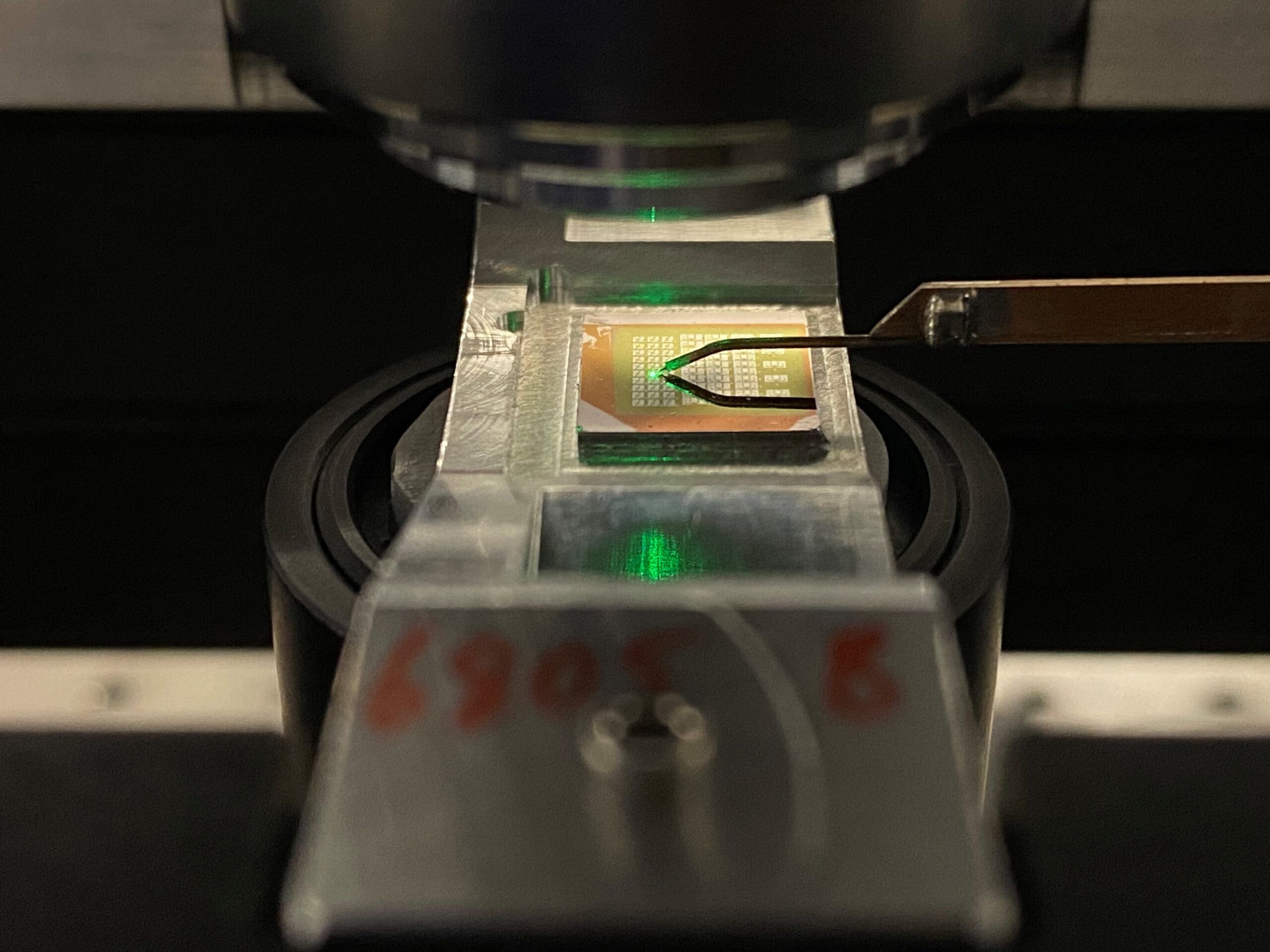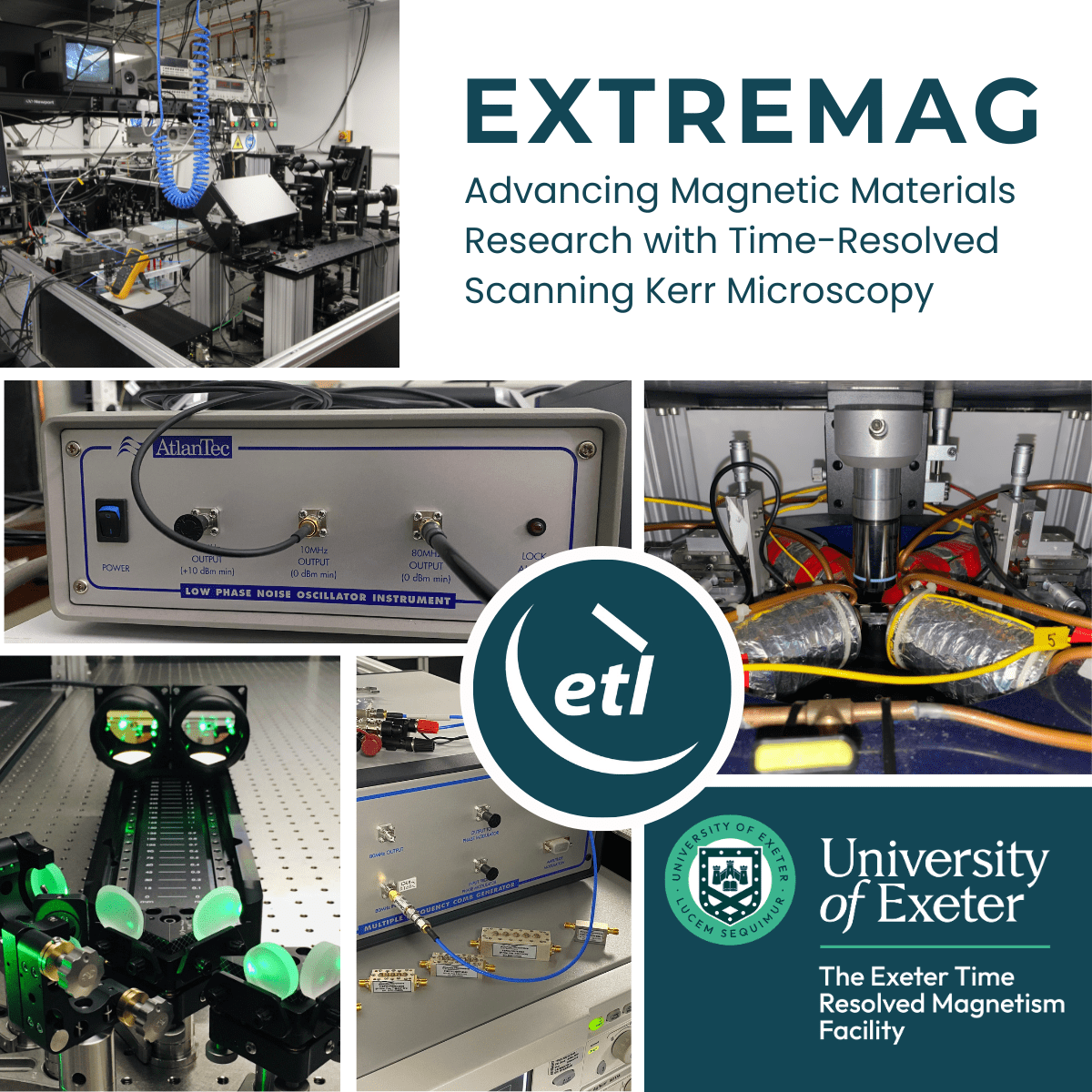ETL are a friendly, approachable team who we have worked closely with to develop a solution for our experiments.Paul Keatley, Senior Experimental Officer, University of Exeter
The Instrumentation
The time-resolved scanning Kerr microscope operates by utilizing a combination of microwave excitation and probing ultrafast laser pulses. The microwaves either pass through a microscale planar waveguide to generate a microwave magnetic field to excite the magnetization of a material placed on top or pass directly through a magnetic device to leverage magneto-electronic properties for the excitation. The probe laser pulses are used to detect changes in the magnetization by measuring their polarization change due to the magneto-optical Kerr effect. This unique setup allows researchers to both excite and probe magnetic materials with high temporal resolution on picosecond timescales.
Microwave excitation is achieved through an elegant apparatus known as a comb generator, developed through collaborative efforts between ETL and the University of Exeter. This device harnesses the 80 MHz pulse repetition rate signal from an ultrafast laser, generating a range of microwave frequencies up to 18 GHz. These microwave signals are then filtered and utilised to excite the magnetic material or device under investigation.

Synchronisation Challenges and Solutions
One of the primary challenges in time-resolved scanning Kerr microscopy is the synchronisation of the microwave excitation with the probing laser pulse. Keatleyand colleagues tackled this obstacle by developing the comb generator, which is inherently synchronised with the laser due to its utilisation of the laser sync signal to derive microwave comb. In addition, the developed comb gernerator permits audio-frequency modulation of the output microwave excitation for phase sensitive detection to enhance measurement sensitivity to the magnetization dynamics.
This synchronisation ensures precise long-term temporal alignment of the microwave excitation and probing laser pulse, enabling accurate measurements of the material response on picosecond timescales. By manipulating a translation stage with a pair of retroreflector mirrors, researchers can adjust the time delay between microwave excitation and laser probing with sub-picosecond precision, facilitating the construction of detailed time-resolved scans of magnetisation dynamics.

Advantages of Comb Generator Technology
The implementation of comb generator technology offers significant advantages in measurement stability. By eliminating phase drift in the microwave signal, researchers can conduct prolonged scans and imaging sessions of magnetic materials and devices, lasting up to an hour or more for large areas with the highest resolution. The comb generator phase stability is therefore crucial for obtaining reliable high resolution images of GHz magnetic oscillations by eliminating any phase wonder of the material response during the measurement.
Extending the Reach: X-ray Ferromagnetic Resonance Experiments
Beyond its application in the EXTREMAG Facility, comb generator technology has also been used at the Diamond Light Source in the UK and at the Advanced Light Source in the USA for x-ray ferromagnetic resonance experiments. In this context, the comb generator is synchronized to the synchrotron clock signal of ~500 MHz, enabling precise temporal alignment of the generated microwave excitation with the probing x-ray pulses. This application of comb generator technology underscores its versatility and utility across different experimental setups for time-resolved measurements.
Collaborative Innovation with ETL
The collaboration of Keatley and colleagues with ETL spans several years, during which they have jointly developed multiple solutions tailored to the specific needs of their experiments. ETL’s provision of low-phase-noise oscillators, broadband amplifiers, and narrowband pass filters designed specifically for the use with the different comb generators further enhances the capabilities of their time-resolved microscopy setups. Keatley reflects that ‘ETL has always provided a friendly, approachable team with reliable expert knowledge to offer bespoke solutions for our particular experimental needs to realise state-of-the-art capability in time-resolved scanning Kerr microscopy and x-ray ferromagnetic resonance experiments.’
The work conducted at the EXTREMAG Facility represents a paradigm shift in our ability to probe and understand the intricate dynamics of magnetic materials. Through innovative instrumentation and collaborative partnerships with both academic and industrial partners, researchers like Paul Keatley and his colleagues are paving the way for ground breaking discoveries in the field of experimental condensed matter physics of novel magnetic materials, devices and beyond.